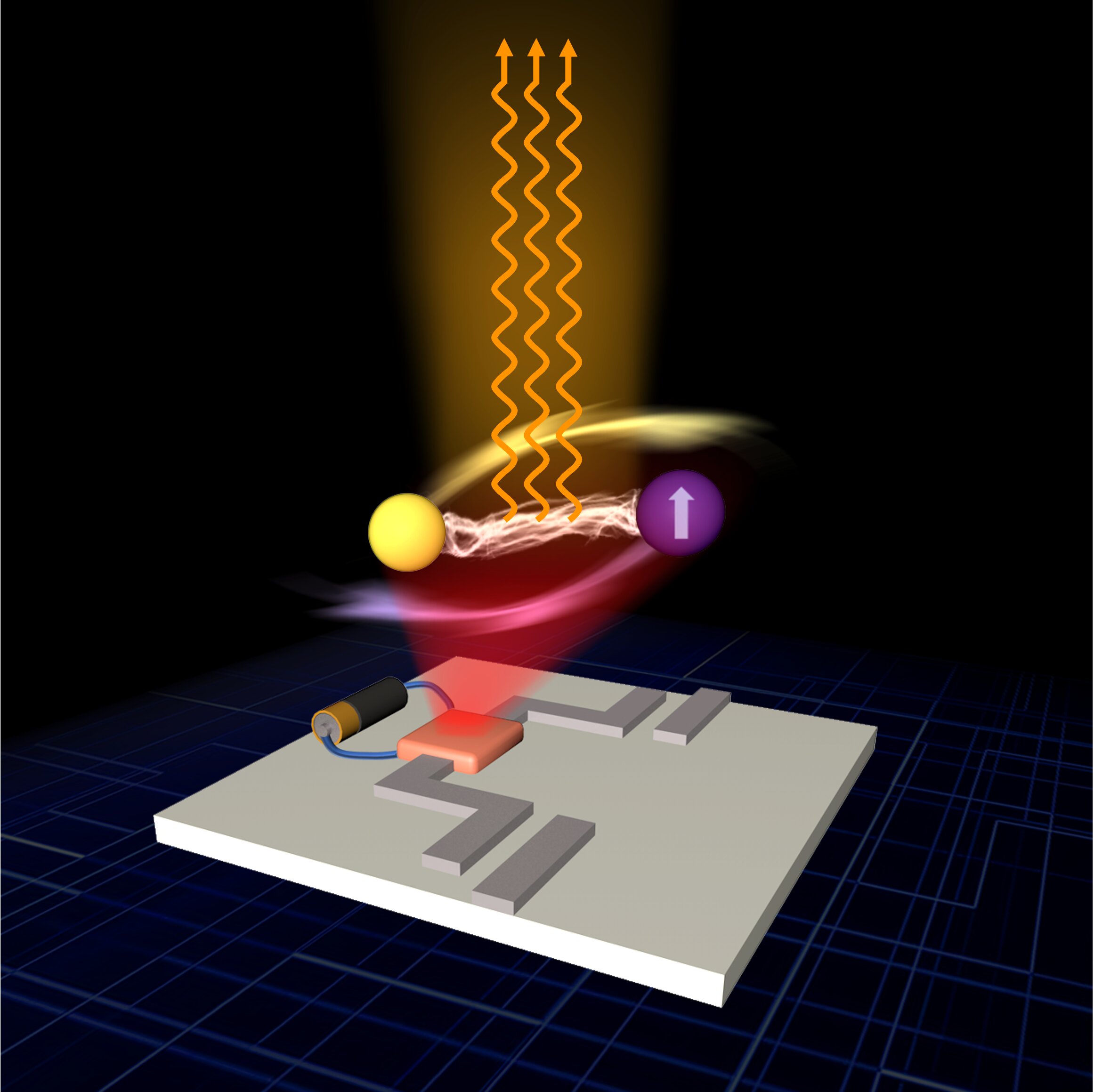

When light interacts with matter, it can produce unique quasi-particles known as polaritons. These particles are half light and half matter. Polaritons have been studied by physicists for a few decades now, with researchers exploring their potential for developing highly performing lasers or other technologies.
Researchers at the University of Manitoba have recently developed a highly performing device based on cavity magnon polaritons that can emit and amplify microwaves. This device was found to significantly outperform previously proposed solid-state devices for coherent microwave emission and amplification at room temperature.
Motivated by the need for coherent on-chip microwave sources in wireless communication and quantum information technologies, the researchers set out to explore the potential use of cavity magnon polaritons. They hoped to achieve high-quality microwave emission and amplification with their device, while retaining its stability and controllability as a hybrid light-matter coupled system.
The researchers created a light-matter coupled system based on cavity magnon polaritons for coherent microwave emission. They ultimately hoped to achieve a higher performance than those reported in previous works, while retaining their device’s stability and controllability as a hybrid light-matter coupled system.
The strong interaction between amplified microwaves and magnons in the researchers’ system produces a new type of polariton, which they dubbed a “gain-driven” polariton. Compared to conventional polaritons realized in previous studies, this gain-driven polariton has a stable phase, which in turn enables the coherent emission of microwave photons.
In initial evaluations, a proof-of-principle device created by this team of researchers achieved remarkable results, outperforming both spin-toque oscillators (STOs) and solid-state masers developed in the past. Masers are devices that use the stimulated emission of radiation by atoms to amplify or generate microwave radiation.
The new gain-driven polariton realized by the researchers could open exciting new possibilities for the development of highly performing solid-state microwave sources that can be integrated on-chip. These polariton microwave sources are frequency tunable due to the controllability of light-matter interaction and could ultimately be integrated in a broad range of technologies and devices, including wireless communication systems and quantum computers.
“As the physics of gain-driven light-matter interaction is new, our study may also lead to new discoveries beyond microwave applications,” said Can-Ming Hu, the researcher who directed the study. “We have now submitted a patent application, and my students are working on developing prototype devices together with industry partners.”
In the realm of software development, the ability to swiftly and accurately address bugs is…
The realm of quantum computing and communication is not just an abstract dream anymore; it…
In a remarkable leap for the field of material science, a collaborative research initiative has…
Throughout Earth's vast history, our planet has endured five major mass extinction events that reshaped…
Rainfall is a vital element of our planet’s hydrological cycle, yet many aspects of its…
On a night when the universe aligns, a mesmerizing phenomenon awaits: the appearance of the…
This website uses cookies.